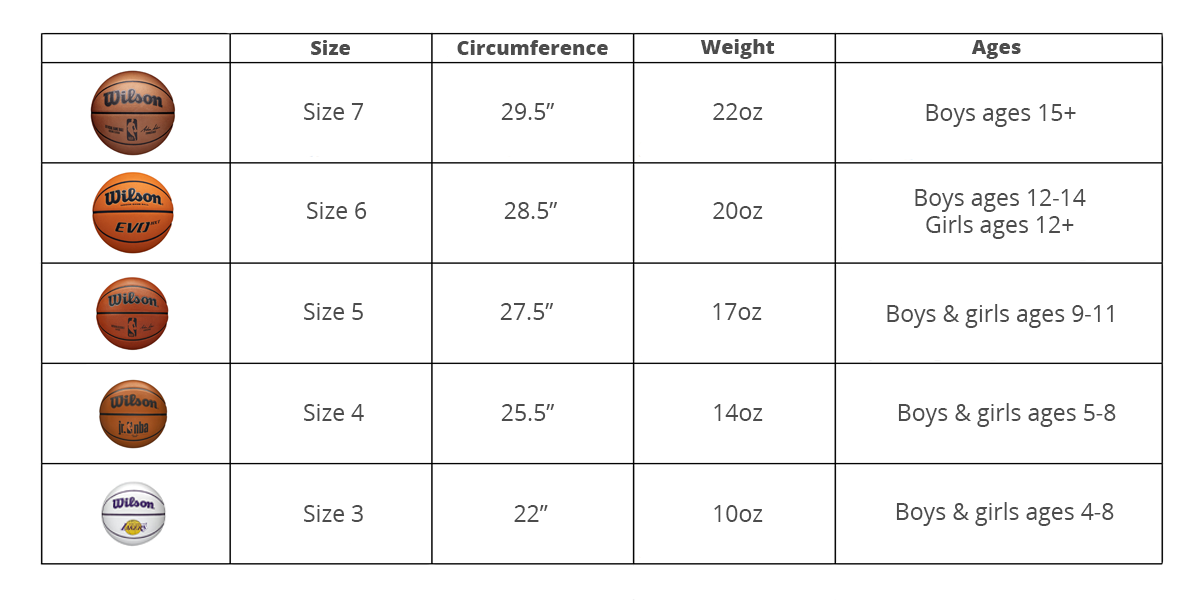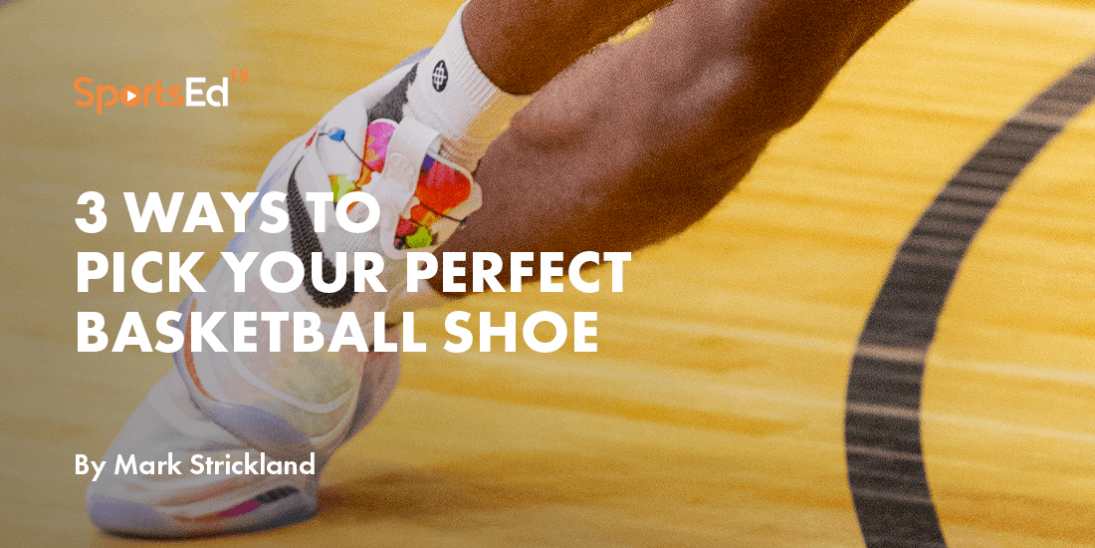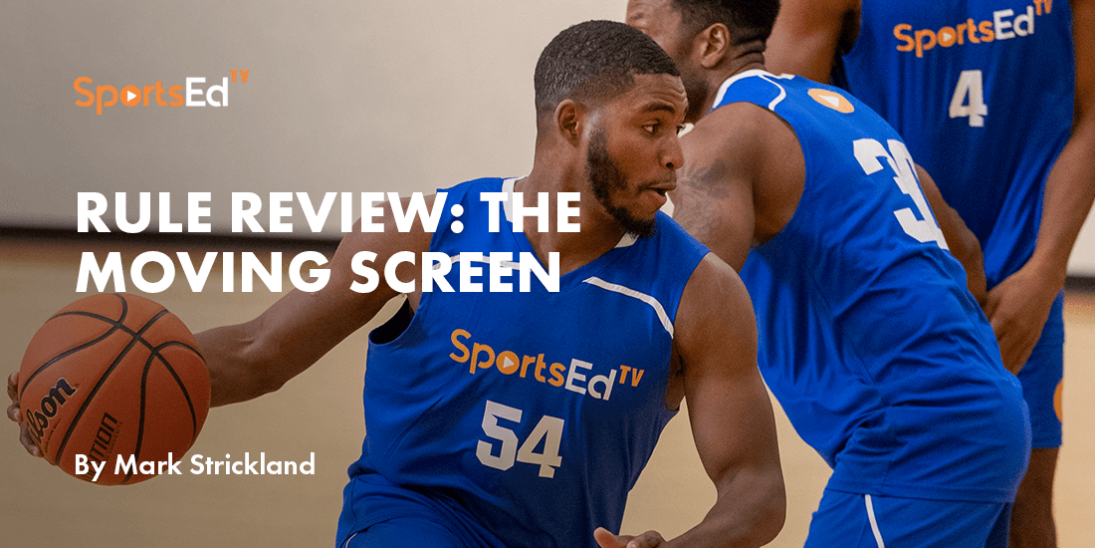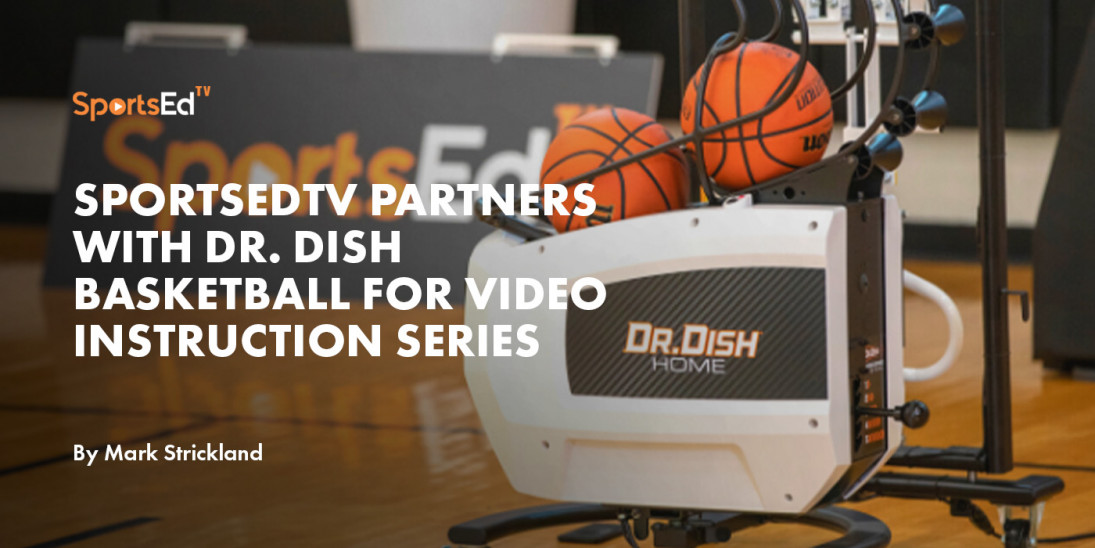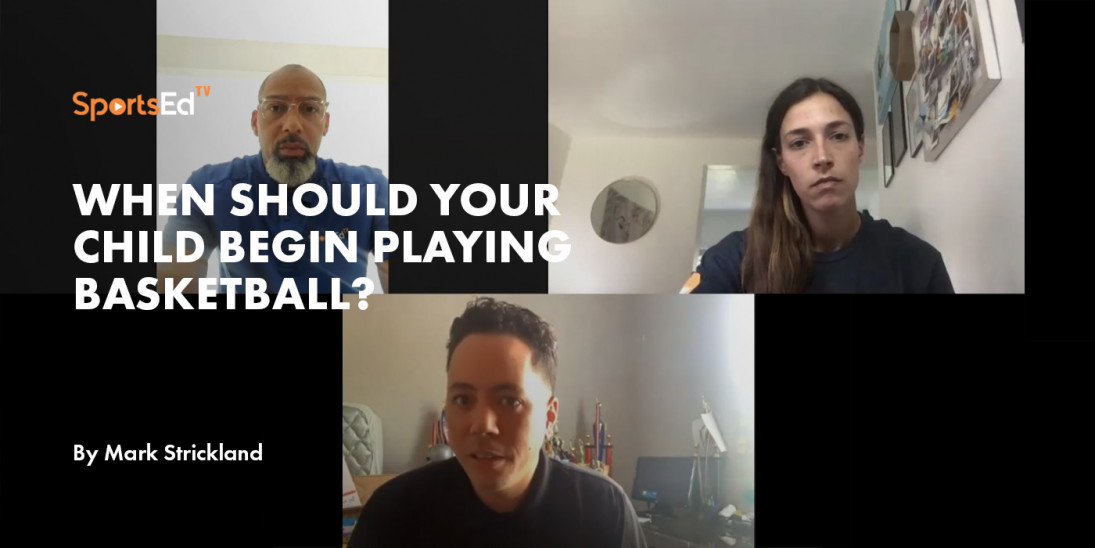Basketball
Welcome and thanks for visiting...

How To Pick A Basketball: Basketball Sizes by Age
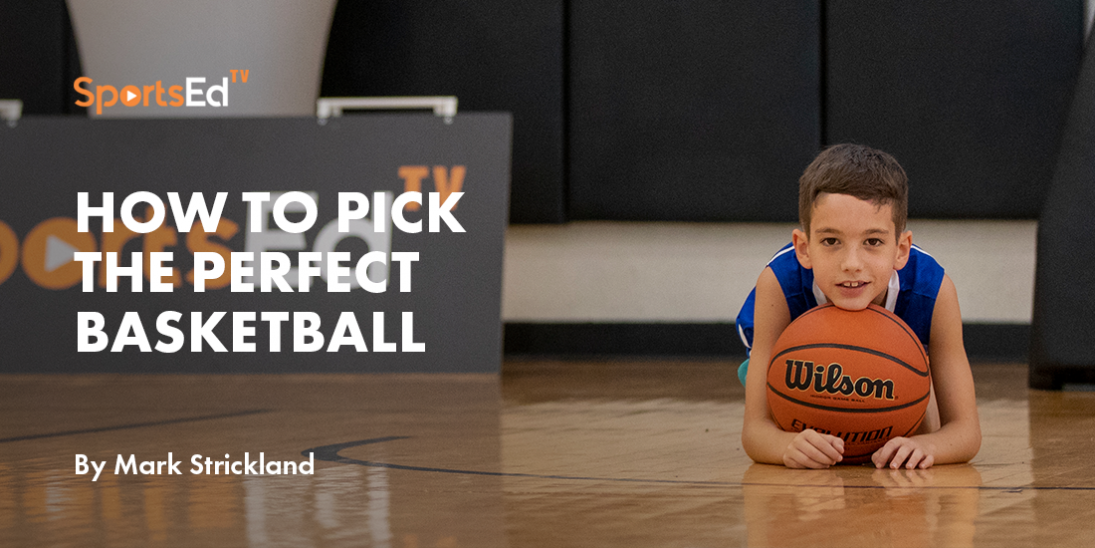
Basketball inventor James Naismith didn't enjoy the luxury of choice when he invented the game. A soccer ball had to do, as did the peach baskets the janitor at his YMCA nailed to the gymnasium balcony to brand the game.
Legend has it the janitor substituted peach baskets for the boxes Naismith requested.
Can you imagine Boxball?
One hundred and thirty-one years later there is a very wide variety of basketballs—even some Bluetooth equipped linked to a smartphone so a player or basketball coach can analyze and save data revealing strengths and weaknesses in play.
But, whoa, we need to remember that not many childhood memories resonate stronger than sleeping with a first baseball glove, basketball, or racquet, so let’s begin by talking about fitting the ball to the player.
What goes into the choice of a ball?
Well, surely size and weight need to accommodate the age and strength of players.
Basketball Size by Age Choices:
Basketball Sizes by Age
Basketball Size 3
These 22” basketballs typically weigh about 10 oz., and are ideal for the youngest of players and the young at heart.
Basketball Size 4
With a circumference of 25.5” and a weight of only 14 oz, these child-friendly basketballs are ideal for children ages 4-8.
Basketball Size 5
For players aged 8-11, size 5 basketballs are the ideal size for play. With a circumference measuring 27.5”-27.75” and a standard weight of 14-16 oz, this is the most popular basketball size for youth leagues.
Basketball Size 6
These basketballs measure 28.5” and have a standard weight of 20 oz. Logically, size 6 balls are slightly smaller than size 7 basketballs, making them ideal for players with smaller hand spans. Size 6 balls are the official ball size for most women’s professional basketball associations, such as the International Basketball Federation (FIBA) 3x3, in addition to women's college and high school basketball leagues, and youth leagues for players 12 and up.
Basketball Size 7
These basketballs measure 29.5” in circumference and have a standard weight of 22 oz. Size 7 basketballs are the standard ball size for most men’s professional basketball associations, as well as men’s college and high school basketball leagues.
In addition to inquiries about sizing other questions include:
- What basketball material is best?
- How much should a basketball be inflated?
- Which basketball is better, leather or rubber?
- Are there other basketball selection options?
Basketball Material Choices
The choice of which material the basketball is made of is governed mostly by where it is likely going to be used. Leather basketballs are the best and they are recommended for indoor play on wooden courts.
Rubber and composite basketballs are recommended for outdoor play and concrete or asphalt courts. If you are playing on an outdoor court the concrete surface can damage the leather balls so a rubber or composite basketball is a better choice.
Rubber Basketball
today continues its great outdoor basketball popularity raining three-pointers on driveways and playgrounds everywhere. Rubber basketballs are nicknamed “street basketballs” because they can absorb the rougher surface of concrete courts without sacrificing the ball’s grip. A rubber ball is also a good choice for beginners because it is the easiest ball to control
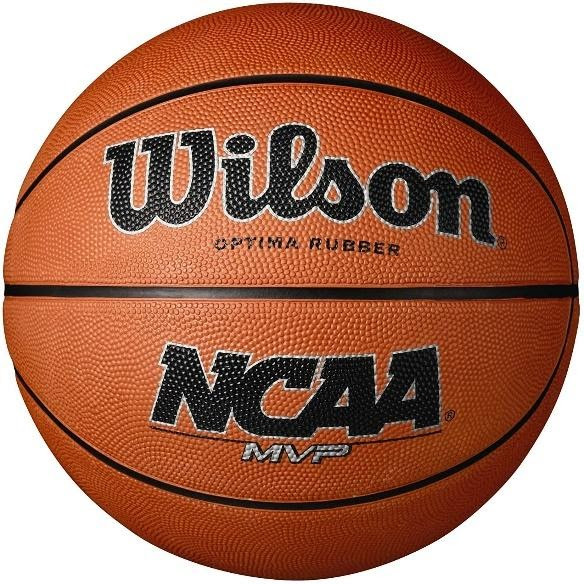
Rubber has been the outdoor go-to material for 3000 years when Mayan athletes played their ancient game shooting a rubber ball weighing between 6 and 8 pounds through a vertical hoop.
Composite Basketballs
are sometimes called “Synthetic Basketballs” and are appropriate for indoor and outdoor use. They’re more durable than leather and are the most popular basketball material. The NCAA has switched to a synthetic basketball game for its competitions. Some indoor basketballs are made of composite or synthetic leather. The upside is that they don’t need to be broken in like a leather basketball.
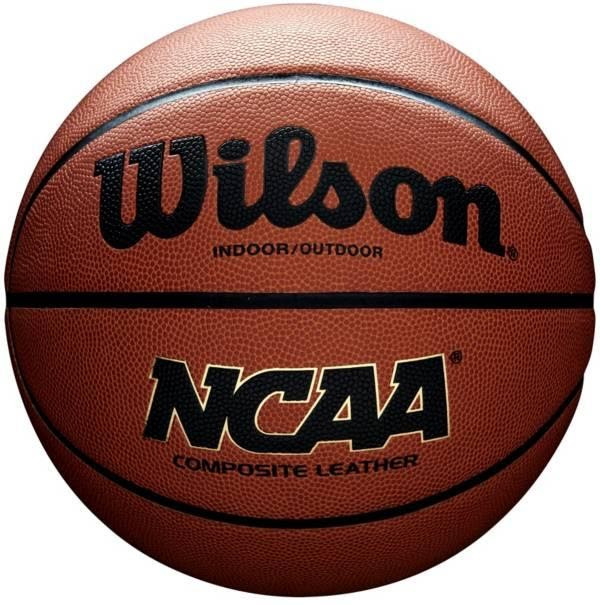
Leather Basketball
continues to be the material of choice in the big leagues. A leather basketball should not be used outside, because the concrete surface of an outdoor basketball court causes the leather to roughen and wear, which eventually ruins the ball’s grip.
The NBA Wilson game ball was first used during the league’s 75th anniversary season in 2021/22. The other debuts will be during the 2022 WNBA season, 2021/22 NBA G League season, 2021 NBA 2K League season, and the inaugural BAL season.
A Leather Basketball with laces was Naismith’s first, after birthing the game with a futbol.
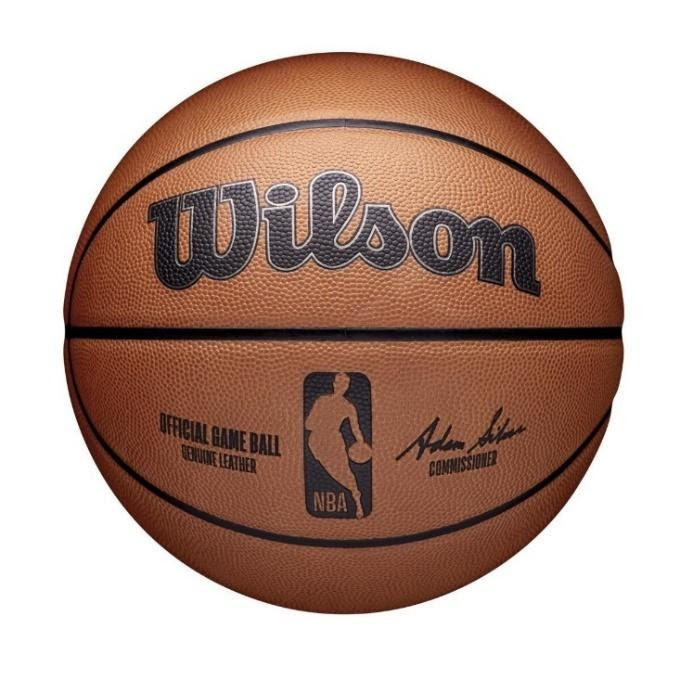
Additional Basketball Selection Options
Color is an option, too, and the burned orange is traditional, though the game has included black balls, blue balls, balls of virtually any color, and even decorated balls. A caveat emptor, though: if you’re buying a ball to conform to a league or club, be sure to check the official ball-type regs.
Training Balls are the final basketball option and that is where the earlier mentioned Bluetooth-equipped ball is used.
- The Traditional Trainer is a weighted rubber ball, weighing usually double or more than your average basketball, and is used to develop strength and form for dribbling, passing, and shooting as well as ball-handling skills.
- The Shooter’s Ball has precise markers showing proper hand placement and is designed to develop proper shooting techniques.
Basketball Inflation
An NBA basketball must be inflated to a pressure of 7.5 to 8.5 PSI. The WNBA uses the same pressure regulations. In the NCAA inflation requirements are given in weight, with the men’s ball having a maximum weight of 22 ounces and the women’s ball having a maximum weight of 20 ounces. Frequently scholastic and league basketball follows NCAA inflation regulations. It is always good to check that source to be sure.
In FIBA play, the official rules state that the ball “be inflated to an air pressure such that, when it is dropped onto the playing floor from a height of approximately 1,800 mm measured from the bottom of the ball, it will rebound to a height of between 1,200 mm and 1,400 mm, measured to the top of the ball.”
And Finally...
So, if while your little guy or gal sleeps snuggled with that first ball dreaming of confetti falling from the ceiling or climbing the ladder to snip the pee wee league nets…and you're conjuring up some good-natured trash for your next game at the Y, remember to thank those rambunctious rugby players who played Naismith's first game years ago.
Use code SPORTSEDTV-15 for 15% off Wilson EVOLUTION and EVO NXT from our friends and partners at Wilson Basketball.

